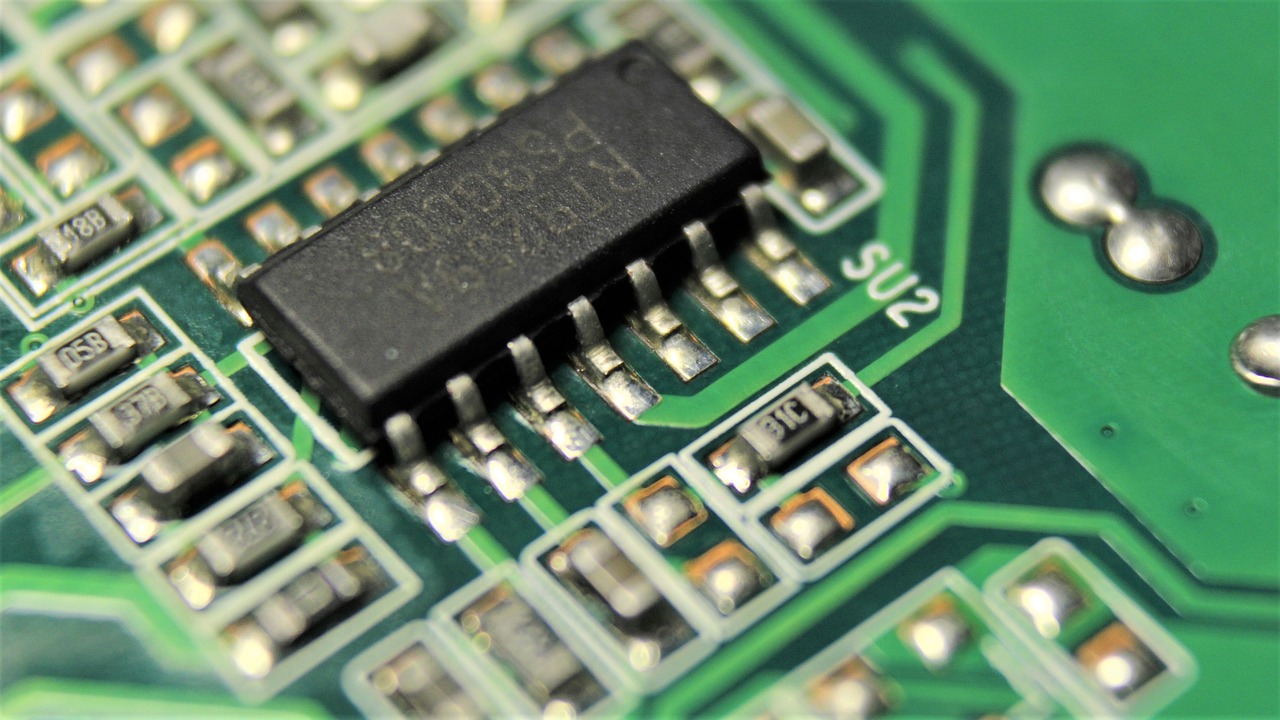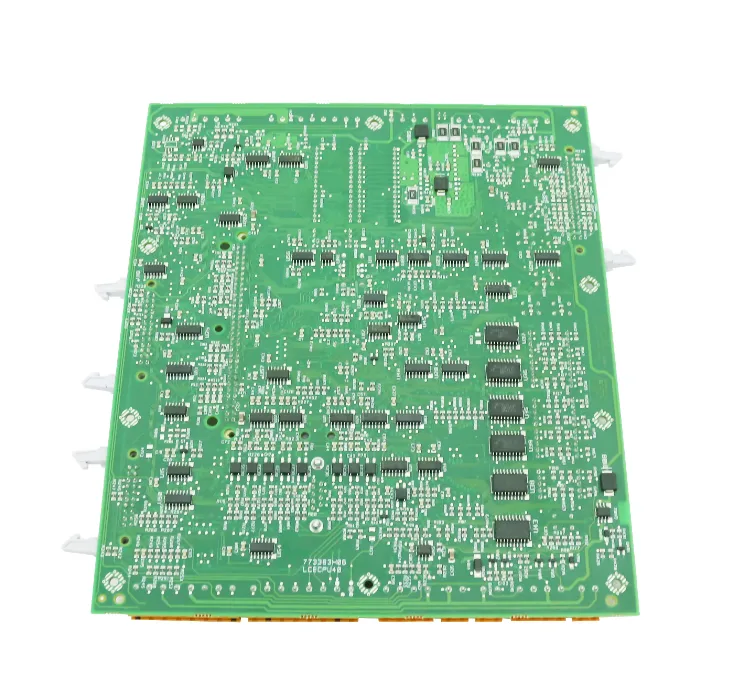
The Printed Circuit Board (PCB) industry is a cornerstone of modern electronics, powering everything from smartphones to medical devices, and even industrial machinery. As the demand for electronic devices continues to grow, so too does the complexity of the PCB supply chain. For manufacturers, sourcing and producing PCBs is a detailed and often challenging process, involving various steps, materials, and stakeholders. In this blog, we’ll walk through the key elements of the PCB supply chain and why understanding it is crucial for anyone in the electronics manufacturing industry.
What is a PCB?

A Printed Circuit Board (PCB) is a critical component that serves as the foundation for connecting and supporting electronic components. It consists of a flat, rigid or flexible material (usually fiberglass or composite) with conductive pathways, or traces, etched into the surface. These traces allow for the connection of various electronic components such as capacitors, resistors, and microchips, which are essential to the functionality of any electronic device.
PCBs can vary in complexity, from single-sided designs used in simpler electronics to multi-layered designs used in advanced systems such as high-performance computing or communication equipment.
Key Stages of the PCB Supply Chain
The PCB supply chain is a multi-step process that includes the procurement of raw materials, the design and manufacturing of the PCB itself, and finally, the assembly of electronic components onto the board. Let’s take a closer look at each of these stages:
1. Raw Materials Sourcing
The first step in the PCB supply chain is sourcing the materials needed to create the board itself. These materials typically include:
• Copper: Copper is the primary material used for the conductive traces on PCBs. It is typically available in the form of copper-clad laminate (CCL), which is a thin sheet of copper foil bonded to a substrate such as fiberglass.
• Substrates: The substrate material provides the structural integrity of the PCB. The most common substrate materials are fiberglass (FR4) and polyimide (used in flexible PCBs).
• Resins and Chemicals: Various resins, solvents, and chemicals are needed for etching the circuit traces and ensuring proper adhesion between the copper and substrate.
Manufacturers typically rely on specialized suppliers who produce high-quality materials for PCB production. Any disruption in the supply of raw materials can lead to delays in the production process, making it essential for PCB manufacturers to maintain strong relationships with reliable suppliers.
2. PCB Design
Once the raw materials are sourced, the design phase begins. The design process is crucial in determining the performance, functionality, and efficiency of the final PCB. There are two primary design considerations:
• Schematic Design: This is the stage where the electronic components and their interconnections are defined. Engineers create a blueprint of the PCB, often using specialized Computer-Aided Design (CAD) software to lay out the components and their connections.
• PCB Layout Design: The layout phase involves translating the schematic design into a physical arrangement of components and traces on the PCB. This includes determining the size and shape of the PCB, the placement of components, and the routing of electrical traces.
At this point, the design is reviewed for manufacturability, electrical performance, and reliability. Issues like trace width, component spacing, and the potential for signal interference are carefully considered. The design is then sent to the PCB manufacturer for fabrication.
3. PCB Manufacturing
Once the design is finalized, the PCB goes into the manufacturing phase. This stage involves several critical steps:
• Layer Lamination: In the case of multi-layer PCBs, the different layers of the board are stacked and bonded together using heat and pressure. Each layer is etched with copper traces that connect the components.
• Drilling: Holes for through-hole components are drilled into the PCB. In modern designs, these holes can also be used for vias—small copper-plated holes that allow electrical signals to pass between different layers of the PCB.
• Etching: The copper layers are etched using a chemical process that removes excess copper, leaving behind the traces that form the circuit pathways.
• Plating and Coating: After etching, the PCB may undergo various plating and coating processes, such as tin-lead or gold plating, to protect the copper traces and improve solderability.
• Testing: Quality control is a crucial part of PCB manufacturing. Testing ensures that the board functions as expected, without short circuits or open circuits. In some cases, automated optical inspection (AOI) or X-ray testing is used to identify defects.
4. PCB Assembly
After the PCB is manufactured, it is ready for assembly. The assembly process involves mounting electronic components onto the board. This is done in two primary stages:
• Surface-Mount Technology (SMT): SMT involves placing smaller components directly onto the surface of the PCB. These components are then soldered using either reflow soldering or wave soldering techniques.
• Through-Hole Technology (THT): For larger components, or components requiring additional mechanical stability, through-hole technology is used. This involves inserting the leads of components through holes in the PCB and soldering them on the opposite side.
The assembly process may also include additional steps like conformal coating for protection, or testing to ensure that the assembled PCB functions as intended.
5. Distribution and End User Integration
Once the PCB is fully assembled, it is packaged and distributed to customers, often to original equipment manufacturers (OEMs) who will integrate the PCBs into their final products. From there, the finished electronic products are distributed through various channels to end-users.
Challenges in the PCB Supply Chain
The PCB supply chain is susceptible to a variety of challenges that can impact the overall efficiency of production:
• Material Shortages: Shortages of key materials, such as copper or resin, can cause delays and drive up costs. The COVID-19 pandemic highlighted the fragility of global supply chains, leading many companies to seek alternative sourcing strategies.
• Supply Chain Disruptions: Natural disasters, geopolitical tensions, and trade restrictions can disrupt the flow of materials and components, further complicating the PCB supply chain.
• Complexity of Designs: As PCB designs become more complex (e.g., with the growing demand for multi-layer boards), the manufacturing and testing processes become more intricate, leading to longer lead times and higher costs.
Strategies for Effective PCB Supply Chain Management
To navigate these challenges, companies can adopt several strategies:
1. Supplier Diversification: Sourcing raw materials and components from multiple suppliers across different geographical locations can help mitigate the risks associated with geopolitical tensions, trade disputes, and supply shortages; a diverse mix of bilateral trade agreements and nearshore, offshore, and reshore operations is proving most effective in the current supply chain climate.
2. Compliance Management: Implementing robust systems for monitoring and ensuring compliance with environmental regulations, quality standards, and IP protection is essential in minimizing risks and potential penalties.
3. Adoption of New Technologies: Given that growth tends to come through innovation, and the PCB industry has a projected worth of $90.1 billion by 2030, the creation of more advanced components is bound to be exponential; now more than ever, it’s crucial that companies invest in the latest technologies and manufacturing processes to improve efficiency, reduce costs, and help companies stay competitive in a rapidly evolving market.
4. Demand Forecasting and Inventory Management: Accurate demand forecasting and efficient inventory management can help companies anticipate and adapt to changes in supply and demand, reducing the risks of stockouts or excess inventory.
5. Collaboration and Information Sharing: Establishing strong relationships with suppliers, customers, and other stakeholders in the PCB supply chain can facilitate better communication and information sharing, enabling more effective decision-making and faster response to market changes. For companies interested in enhancing the flow of information between supply chain stakeholders, the implementation of a private blockchain system might prove beneficial, as it increases the integration of financial and logistics services, which enables greater data collaboration.
Ultimately, the PCB supply chain is a sophisticated network that plays an absolutely pivotal role in the electronics industry. A deep understanding of its various stages, key stakeholders, and challenges is essential for companies looking to optimize their supply chain management, reduce risks, and ensure the timely delivery of high-quality products.
Conclusion
The PCB supply chain is a highly intricate and multi-faceted process, involving raw material sourcing, design, manufacturing, assembly, and distribution. Each stage requires careful coordination and quality control to ensure that the final product meets the needs of the customer and performs as intended. As demand for advanced electronics continues to rise, it is essential for companies in the electronics manufacturing space to maintain flexibility and adaptability in their PCB supply chains. By understanding each step in the process, businesses can better manage risks, improve efficiency, and deliver high-quality products to market.
In a fast-evolving global market, staying informed about the complexities of the PCB supply chain can provide manufacturers with a competitive edge and ensure they remain responsive to both challenges and opportunities in the industry.
Written by Icey Ye from AIChipLink.
AIChipLink, one of the fastest-growing global independent electronic component distributors in the world, offers millions of products from thousands of manufacturers. Whether you need assistance finding the right part or electronic components manufacturers for your design, you can contact us via phone, chat or e-mail. Our support team will answer your inquiries within 24 hours.












